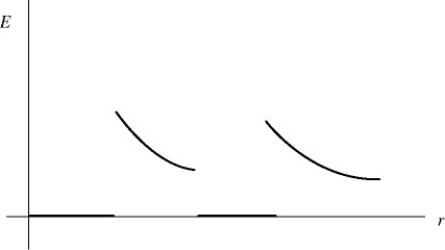Multiple Choice
The graph in the figure shows the electric field strength (not the field lines) as a function of distance from the center for a pair of concentric uniformly charged spheres. Which of the following situations could the graph plausibly represent? (There may be more than one correct choice.) 
A) a positively charged conducting sphere within another positively charged conducting sphere
B) a positively charged conducting sphere within an uncharged conducting sphere
C) a solid nonconducting sphere, uniformly charged throughout its volume, inside of a positively charged conducting sphere
D) a positively charged nonconducting thin-walled spherical shell inside of a positively charged conducting sphere
E) a positively charged nonconducting thin-walled spherical shell inside of another positively charged nonconducting thin-walled spherical shell
Correct Answer:

Verified
Correct Answer:
Verified
Q1: <sub></sub>28) A hollow conducting spherical shell has
Q3: A cone is resting on a tabletop
Q5: A nonuniform electric field is directed along
Q7: A solid nonconducting sphere of radius R
Q8: Two concentric spheres are shown in the
Q9: Two concentric conducting spherical shells produce a
Q9: An uncharged conductor has a hollow cavity
Q9: A hollow conducting spherical shell has radii
Q10: A charge q = 2.00 μC is
Q11: The figure shows four Gaussian surfaces surrounding